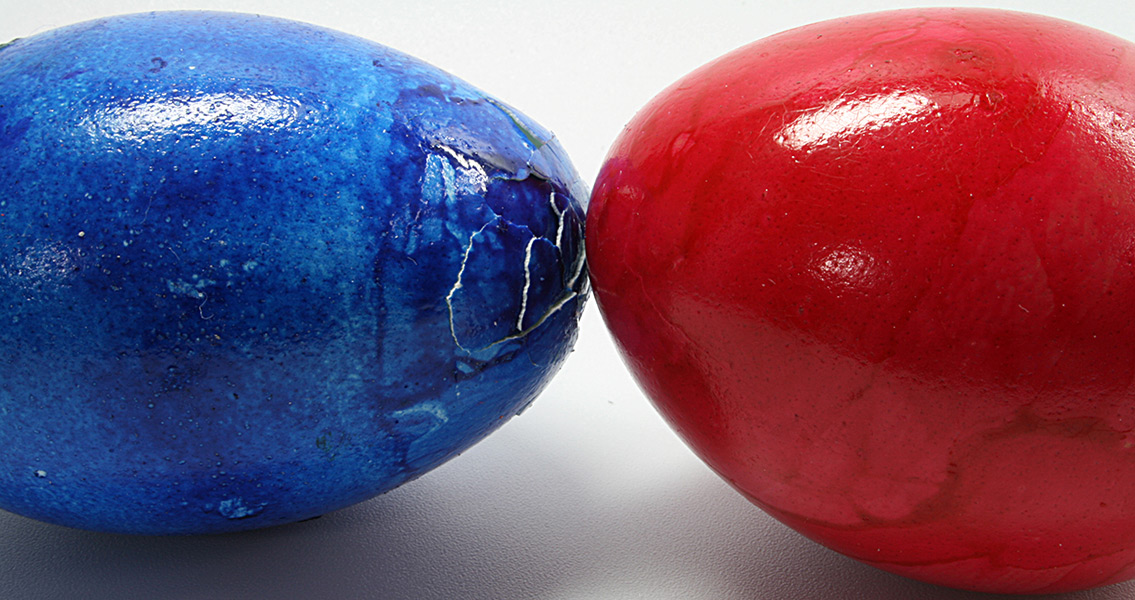<![CDATA[The biblical story behind Easter is of course well known for anyone who celebrates the holiday. Commemorating Jesus' death and celebrating his resurrection, it is a religious festival centred around devotion and the celebration of life. A movable feast whose date each year is dependent of lunar cycles, Easter is celebrated on the Sunday following the first full moon after the Spring equinox. The date of this varies depending on whether a church follows the Gregorian or Julian Calendar. Easter is associated with a variety of symbolic activities and items, most notably Easter bunnies and eggs. These have little connection with the story of Jesus' death and resurrection, and to understand their association with Easter it is necessary to look at the feast's history; its development within the framework of the Christian church, as well its pagan origins. The name itself gives a clue to the complex origins of the modern form of the festival. 'Easter' is never mentioned in the original Scriptures and biblically has no clear connection with Jesus' death and resurrection, which is why some Christian churches actually refrain from using the term 'Easter' and instead use the name 'Resurrection Sunday'. The word is generally considered to have its origins in ancient Germanic languages. One theory is that it comes from 'Eostre', the name of an ancient Teutonic goddess of fertility. Another is that it is in fact a mistranslation of 'hebdomada alba', the Latin name for the Christian Easter Week. In ancient German it came to be known as 'esostarum', which eventually developed into the English 'Easter'. Resurrection stories do not just exist in Christianity of course, and many ancient pagan religions celebrated festivals associated with rebirth around the time of the Spring equinox. It seems likely that elements of these old belief systems have embellished the Christian accounts of Christ's death. As far back as the ancient Sumerians, one of the world's earliest urbanised societies, religious stories existed about divine figures coming back from the dead - the goddess Ishtar was hung naked on a stake, and then resurrected from the Underworld. The Cybele cult of ancient Rome contained a myth very similar to the biblical account of Jesus' life. Cybele's lover, Attis, was the son of a virgin and believed to be reborn every year. The timing of the festival celebrating his life was very close to modern Easter celebrations. Attis' death was mourned on 'Black Friday', before a day of feasting and festivities three days later to celebrate his resurrection. Like Easter, this ancient pagan festival was celebrated in the Spring. As Christianity became more prominent in Europe, it increasingly found converts from the old pagan cults. Resurrection stories and spring festivals were a key part of so many pagan religions because they were linked to changing seasons and the optimism of Spring. The Christian church found it beneficial to accommodate these old celebrations and adjust them into the Christian narrative, to ease the campaign to find converts while allowing Christianity to become incorporated into the existing structure of society. Rabbits and eggs, two of the most obvious things associated with Easter, also have origins that go beyond Christianity. Rabbits, or 'Easter bunnies', can be traced back to the festival of Eostre described above. Eostre's symbol was a hare, and rabbits are often associated with Spring, especially in rural communities where the animals become much more active in periods of warmer weather. Since the ancient Egyptians, eggs have been a symbol of fertility and life, and several cultures have used eggs as a representation of the sun. Exchanging, painting and other activities associated with eggs have therefore had a long association with the passing of Spring. These traditions have been adapted to Christian belief systems, with the breaking open of an egg symbolising the opening of Christ's tomb, for example. Easter as it is observed now has of course been greatly shaped by Christianity and incorporation into the biblical account of Jesus' death and resurrection. Festivals and feasts connected with the arrival of Spring have a much longer history however, and an influence that can still be seen. Image courtesy of Wikimedia Commons user: superbass]]>
The Origins of Easter
